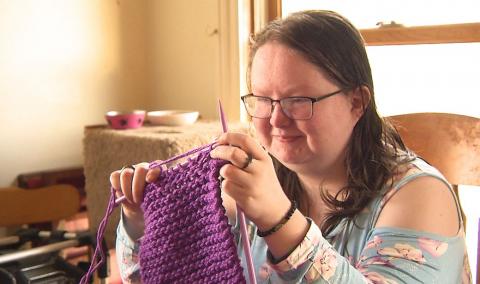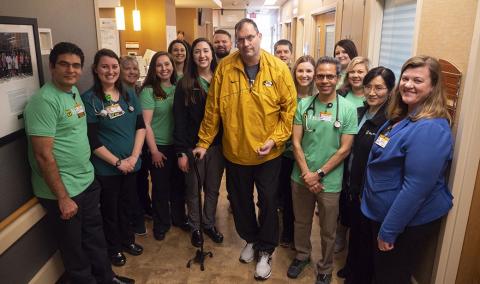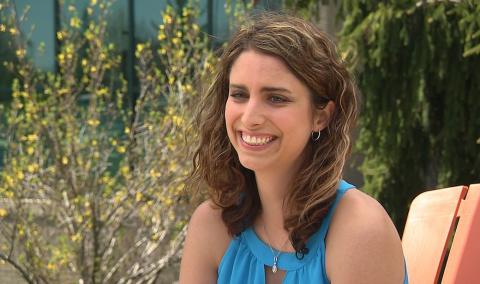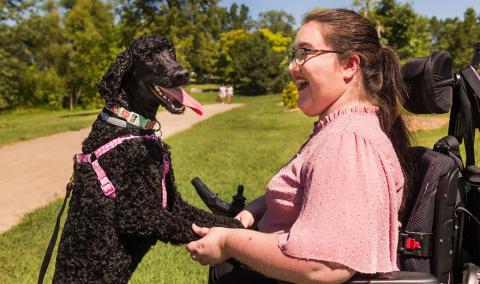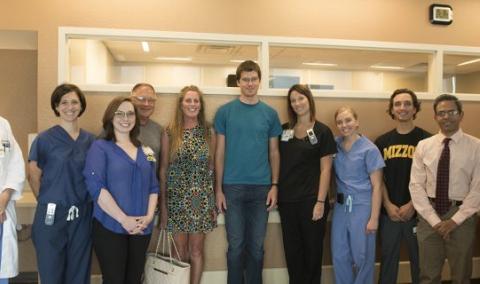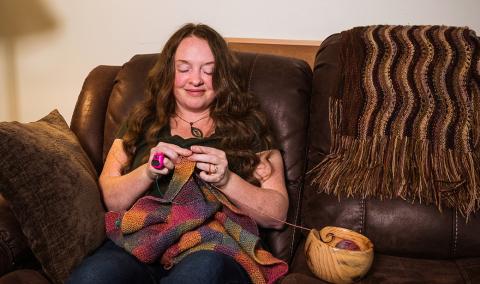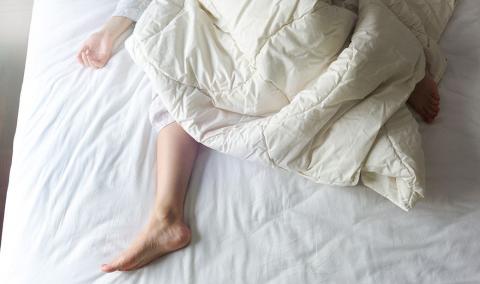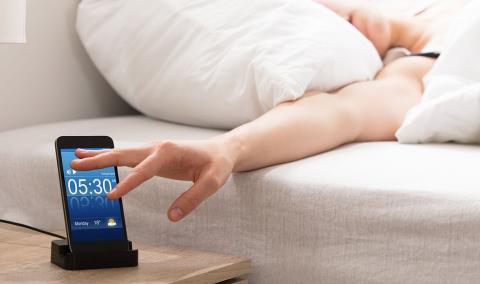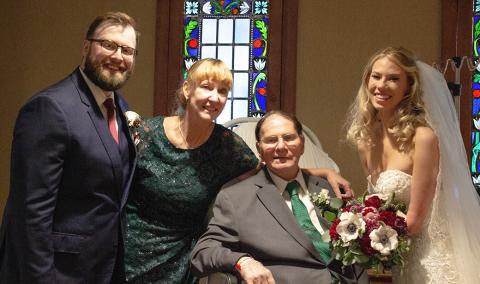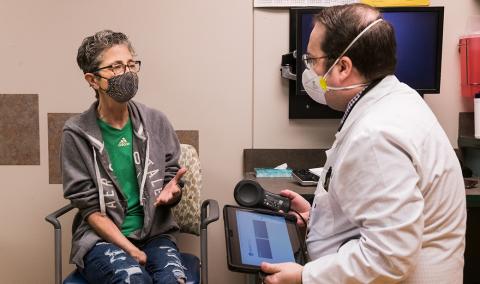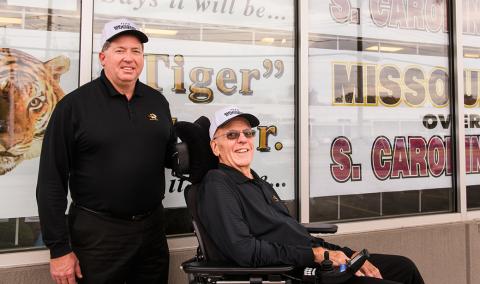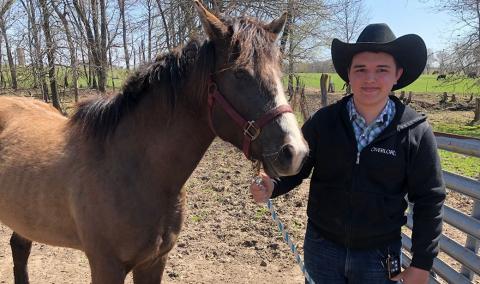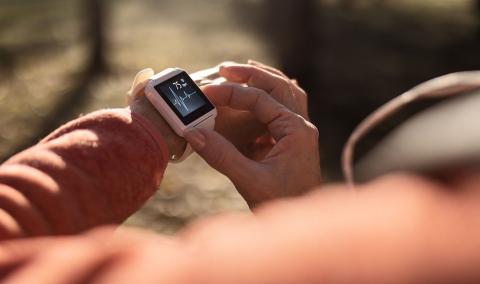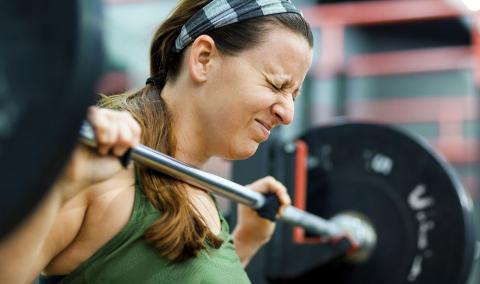If you snore, wake often during sleep and are tired during the day, you might have sleep apnea, a condition that negatively affects sleep quality and can lead to other serious health issues.
Your sleep quality can affect not just your mood and energy, but also your memory and ability to concentrate, and untreated sleep disorders can lead to other health issues. Our sleep experts can help diagnose your condition and provide a personalized plan to help you get the best rest of your life.
Sleep apnea causes and symptoms
Obstructive sleep apnea
Obstructive sleep apnea happens when muscles in your throat relax during sleep, causing your airway to narrow or close when you breathe in during sleep. The brain then causes a brief awakening to reopen the throat. Obstructive sleep apnea can affect anyone, but it is more common if you are male, older, if you have a family history of sleep apnea or a narrow throat, smoke, or have other medical issues such as obesity, hypertension, heart disease (including atrial fibrillation), Type 2 diabetes or reflux.
Central sleep apnea
Central sleep apnea is a less common condition caused when your brain does not send electrical signals to the muscles that control breathing. This may cause you to wake up short of breath or have difficulty falling or staying asleep. Central sleep apnea is more likely to develop if you are male, older, use opioid pain medications, or have had a stroke or heart disorder.
Symptoms of all sleep apneas may include:
- Fragmented or disturbed sleep.
- Low energy or difficulty focusing throughout the day, or feeling sleepy during the day (hypersomnia), especially mid-afternoon.
- Snoring.
- Difficulty staying asleep.
- Waking up with a headache, dry mouth or to urinate nightly.
- Sudden gasping for air or periods of halted breathing during sleep.
Sleep apnea elicits a fight-flight stress response to reopen the upper airway and resume breathing. This stress response can elevate heart rate, blood pressure and blood sugars, which eventually can result in hypertension, diabetes, heart disease or stroke.
Diagnosing sleep apnea
If you are experiencing these symptoms, we offer different ways to help diagnose the problem. The most reliable way is a sleep test, or polysomnogram. Home sleep tests are also available but are not as sensitive as the sleep study performed in the sleep center.
Our sleep center is accredited by the American Academy of Sleep Medicine, and your sleep apnea care team will include our board-certified sleep experts.
Home sleep apnea test
Home sleep tests are more accurate at detecting apnea in people who have a high likelihood of suffering from obstructive sleep apnea. This test, approved by most insurances, monitors breathing, snoring and oxygen levels. Your sleep technologist will give you detailed instructions on how to use the home test.
We offer two types of home sleep tests. If you live near Columbia, you can borrow a testing machine and return it the next day. Or we can mail you a disposable test to save time and effort.
A home sleep test can only check for sleep apnea; it will not test for other disorders. In some cases, a negative result needs to be followed by an in-lab attended sleep study, which is more sensitive for detecting milder sleep apnea.
In-lab sleep study
In-lab sleep studies are a more detailed test and monitor stages of sleep, awakenings, heart rate, oxygen levels, breathing effort, snoring and movements during sleep. You will spend the night in a private, comfortable bedroom with its own bathroom while being monitored by a technician using specialized sensors.
A sleep study is safe and painless, and it provides detailed information to diagnose sleep apnea, parasomnias including REM sleep behavior disorder and Periodic Limb Movement Disorder. Patients with severe sleepiness or narcolepsy may be scheduled for a daytime 'nap test' following the nighttime sleep study.
Sleep apnea treatment at MU Health Care
Lifestyle changes
Your sleep apnea may be resolved with habit changes, such as changing your sleep position, reducing how much alcohol you consume or weight loss. Most people who experience sleep apnea receive successful treatment that not only controls the apnea, but also improves snoring and sleep quality, and as a result, daytime alertness and energy levels.
Air pressure devices
In many cases, the first step to treating sleep apnea is a positive airway pressure machine: continuous pressure (CPAP) or bilevel pressure (BiPAP). A BiPAP device provides more pressure when you breathe in and less when you breathe out. CPAP can also deliver different levels of pressure, but it cannot deliver pressures as high as bilevel can, nor can CPAP drop the pressure as much when you exhale as bilevel can. Both work by blowing pressurized regular room air, not pure oxygen, into a mask worn over the nose and/or mouth.
The air pressure, if high enough, keeps the back of the throat inflated to prevent it from collapsing as you breathe in during sleep. An inflated throat keeps tissues from vibrating, stopping snores, and keeps your body from interrupting sleep to resume breathing. This prevents the stress that apnea places on the heart and body — allowing for a more restorative sleep and increased daytime alertness.
Oral devices
Some oral devices used to stop snoring may also help with mild or moderate sleep apnea in select patients. A mandibular advancement device (MAD) is one option. It keeps the lower jaw moved slightly forward during sleep, opening the airway. MADs are custom fitted to your teeth by a specially trained dentist. MADs may cause some jaw or tooth discomfort and cannot be used with dentures. They are not effective for all patients.
Surgical treatment
If you have been diagnosed with sleep apnea and find it too difficult to sleep while using a CPAP or BiPAP machine and meet certain specific criteria, you may be a candidate for a surgical option called Inspire Therapy.
Candidates for Inspire Therapy must meet minimum requirements, including:
- A body mass index (BMI) below 40.
- An apnea-hypopnea index (AHI) in the range of 15-100 events per hour.
- Unable to tolerate air pressure therapy after documented trial.
Inspire is a battery-powered device surgically implanted under the skin in the chest. It is connected with a wire to the nerve controlling part of your tongue muscle on one side. It sends an electric signal to part of the tongue muscle when you breathe in so the tongue is pushed forward, helping to keep the airway open.
You turn the device on before bed with a remote control and turn it off after you wake up for the day. It sends electrical signals following a time delay to allow you to fall asleep. The voltage and electrical signal are adjusted to achieve the best result, after which a sleep study is performed to further refine settings. In some cases, Inspire Therapy may reduce the severity of your apnea but not eliminate it completely. Results vary.
The battery has an 11-year lifespan, after which the generator component can be replaced. Newer Inspire models are MRI compatible under certain conditions.
Expert care for sleep apnea
With an accredited sleep center and board-certified sleep experts, you can expect the highest quality of care. Our sleep center provides a quiet, private room with an attached bathroom, equipped to make sleeping away from home as comfortable as possible. Our sleep team, from neurologists to technologists to nurses, have decades of experience in diagnosing and treating sleep disorders, including sleep apnea.



